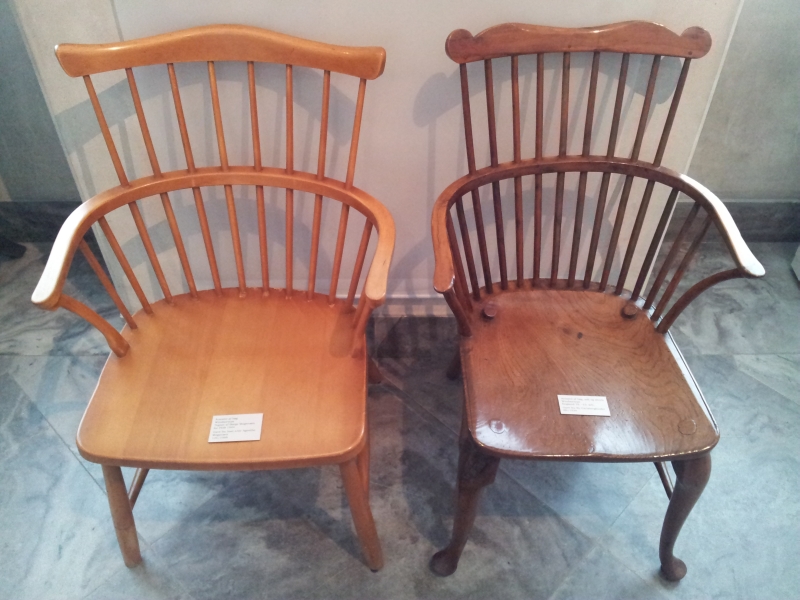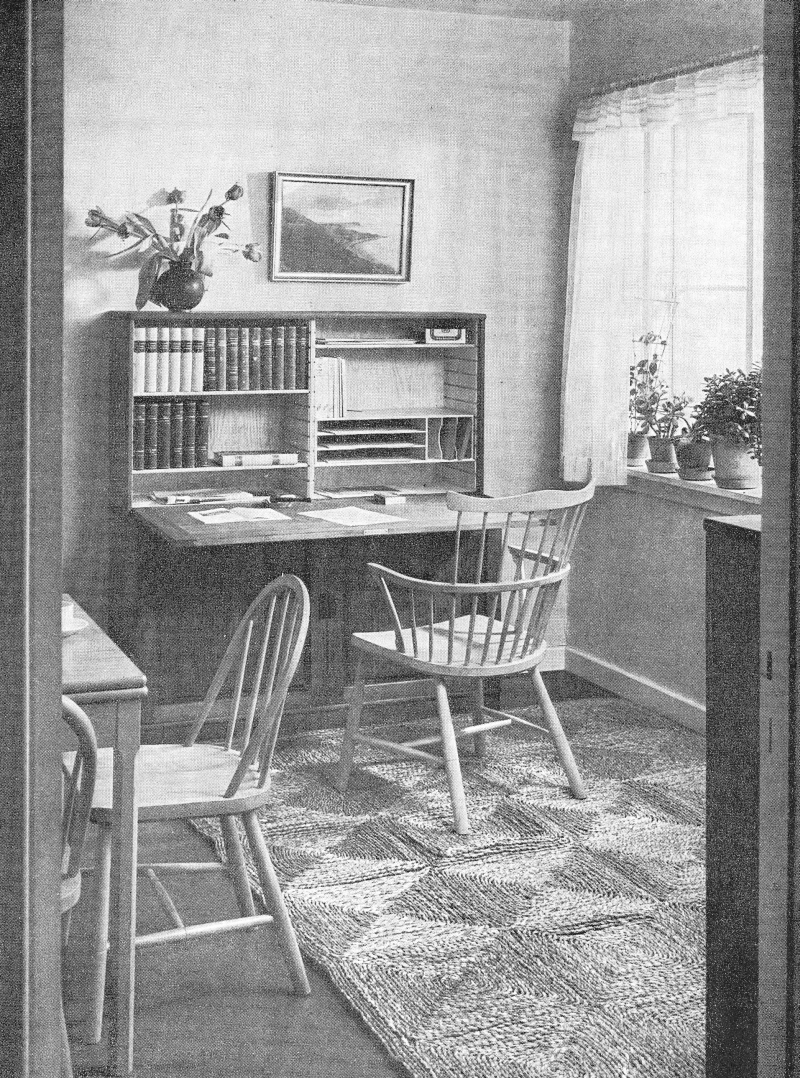You don't have to be a globetrotting design specialist to know that the Danes invented light, uncomplicated wooden furniture with free flowing organic forms.
It's just one of those acknowledged truths we can all trot out at cocktail parties.
Which makes it all the more surprising that the apparent counter-evidence should be found in the Danish Museum of Art and Design in Copenhagen. The Temple to Denmark's design history.

While giving full credit to the museum for presenting Børge Mogensen's 1944 chair next to an 18th/19th century "original" from an unknown English craftsman: the lack of any form of explanation could, and indeed does, lead the visitor to imagine that our understanding of 20th century Danish furniture is based on designers who did nothing more creative than copy forms from previous centuries.
But since when was the world that simple....?
Born in Aalborg in 1914 Børge Mogensen initially trained as a cabinet maker before studying first furniture design at the Danish School of Arts and Crafts and then architecture at the The Royal Danish Academy of Fine Arts.
Following his studies Børge Mogensen became assistant to Kaare Klint, arguably the grandest Grand Doyen of Danish furniture design. Not only was Kaare Klint responsible for many of the early future Danish furniture design classics - Safari Chair, Propeller Stool or his Church Chair which later formed the basis for Egon Eiermann's chair for the Matthäuskirche, Pforzheim - he also established the furniture department at the Danish School of Arts and Crafts and so was responsible for training the first generation of internationally successful Danish furniture architects including Arne Jacobsen and Finn Juhl.
A central feature of Kaare Klint's design philosophy was that one shouldn't completely ignore the past. As Arne Karlsen wrote in his 1968 review of Børge Mogensen's furniture "Klint rejected the formal tradition based on association with the stylistic expressions of former times, but stressed the value of the functional tradition in establishing forms of furniture. In opposition to the Bauhaus group, for instance, he believed that by working up an aversion towards everything old the designer loses his sense of perspective and cuts himself off from the possibility of building on experiences accumulated in the course of centuries"
We quote Professor Karlsen at such length because he summarises more eloquently than we ever could how Klint fought to save tradition from the advance of modernism, and so in effect helped lay the foundation for the current accepted view of Danish furniture as something separate from other European traditions, as "light, uncomplicated wooden......"
Laid a foundation on which Børge Mogensen was one of the most energetic builders.
In 1942 Børge Mogensen was appointed head of the newly established furniture design department of the Danish Co-Operative Society, FDB. Guided by Klint's teachings, Børge Mogensen developed wooden furniture for the FDB largely based on traditional English, Swedish and American designs.
His selection of such traditional standards wasn't however based on the how the pieces looked, but the nature of their construction, their functional properties and the approach to using materials they embodied.
They are also all pieces that, with a little bit of qualified tweaking, can be produced industrially.
Which is the principle difference between Mogensen's work and the "originals". And one of Børge Mogensen's most important contributions to Danish furniture design.
Whereas the "originals" that inspired Børge Mogensen were made by craftsmen by hand, his FDB chairs were adapted for industrial production. A compromise that the designer was happy to make as he saw his furniture not as a high value commodity but as simple, good quality everyday furniture that should be affordable for the modern Dane. For Børge Mogensen technology was neither the threat to tradition the Arts and Crafts movement saw it as, nor the alternative the Bauhaus movement sought; but a simple tool.
Whereas Bauhaus were talking about making design more democratic or Charles and Ray Eames were talking about "The most of the best to the greatest number of people for the least", Børge Mogensen was simply taking functional design that had proved its worth and adapting it to the evolving technical realities of the day.
And so while yes, the popular image of Danish furniture design is largely based on objects copied from earlier generations, as the display in the Danish Museum of Art and Design implies, it's based on copying the inherent design tradition in the pieces, and not, automatically, their form.
An important difference.
Børge Mogensen's adaption of these traditions to industrial production is ultimately what allowed his furniture to be produced in a scale that meant it also became known outside Denmark's borders.
And that is one of the reasons that when today we read anything about "Scandinavian Design", we all have similar images in our head.
And of course why large blue and yellow flat-pack furniture warehouses can be found on the edge of all major conurbations. But that's a subject for another post.......
Despite his role in the story of Danish furniture design Børge Mogensen has never reached the same level of public fame, far less acknowledgement, as a Poul Henningsen, Arne Jacobsen or Verner Panton.
And never will. But then that never interested him. What interested Børge Mogensen was wood, high quality furniture at a fair price and the comfort of tradition. Or as Arne Karlsen put it "He never pursues the novelty, or the outwardly sensational. Easy popularity goes against his grain."
Thankfully.
